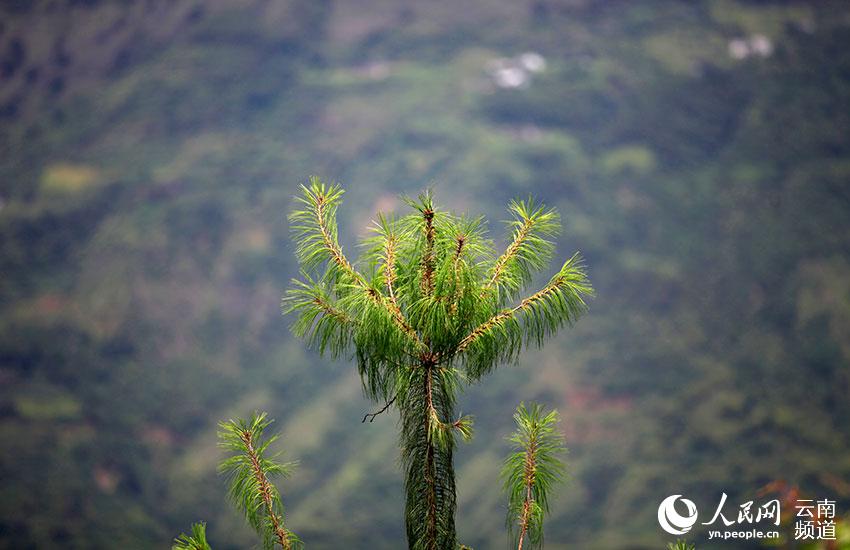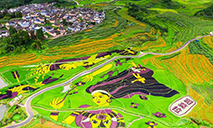Population of critically endangered pine trees undergoes significant growth in SW China’s Yunnan (7)
 |
| Photo shows a Qiaojia five-needled pine sapling. (Photo/Yan Keren) |
The number of Qiaojia five-needled pines, a national first-class protected plant endemic to Qiaojia county in southwest China’s Yunnan province, has significantly increased, according to a nature reserve in the county.
When the species was first discovered in 1990 in the county, there were only 34 individual plants accounted for in the wild, said the management bureau of the Yunnan Yaoshan National Nature Reserve. It has previously been classified as “critically endangered” by the International Union for Conservation of Nature Red List of Threatened Species. So far, nearly 7,000 Qiaojia five-needled pines have been artificially cultivated, including 3,000 saplings that have been transplanted to Kunming city and Chuxiong and Dali autonomous prefectures in the province.
The species is characterized by low levels of genetic diversity, vulnerability, and a narrow range of distribution. To better study and protect the species, the county, the nature reserve and the Kunming Institute of Botany affiliated to the Chinese Academy of Sciences have taken various measures, including the collection of the plant’s seeds in the wild, in-situ conservation, ex-situ conservation, and cultivation and transplanting of saplings, to make sure the number of the trees continues to grow sustainably. On Aug. 10, a tree grown at a botanical garden at the Kunming Institute of Botany bore fruits for the first time.
Researchers have also numbered and equipped each wild individual plant of the species with a GPS tracker to monitor their conditions.
They have also collected data including height, tree crown diameter, and diameter at breast height of the species over the years.
“Statistics show that about 70 percent of the artificially cultivated saplings have survived,” said Zhang Tianbi, a researcher at the nature reserve.
 |  |
Photos
 Dance show saluting traditional culture of the Song Dynasty makes its debut
Dance show saluting traditional culture of the Song Dynasty makes its debut Village in SW China’s Yunnan embraces prosperity through agricultural tourism
Village in SW China’s Yunnan embraces prosperity through agricultural tourism Eighth birthday for pair of giant pandas celebrated in Haikou, Hainan province
Eighth birthday for pair of giant pandas celebrated in Haikou, Hainan province Olympic gold medalists portrayed in Shanxi artist’s polymer clay sculptures
Olympic gold medalists portrayed in Shanxi artist’s polymer clay sculptures
Related Stories
- World Heritage Sites in China: Old Town of Lijiang
- Infrared cameras capture footage of silver pheasants strolling in forest in SW China’s Yunnan
- World Heritage Sites in China: Hani Rice Terraces
- Critically endangered orchid lost for over 25 years rediscovered in SW China's Yunnan
- Wenshan prefecture in SW China’s Yunnan makes headway in conservation of endemic herb
- Leisure beyond one’s imagination: A snapshot of the wandering elephant herd returning to their habitat
Copyright © 2021 People's Daily Online. All Rights Reserved.






